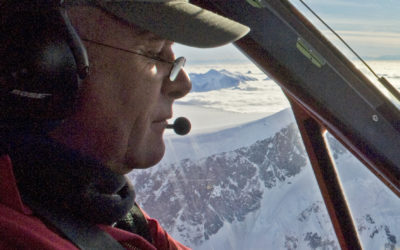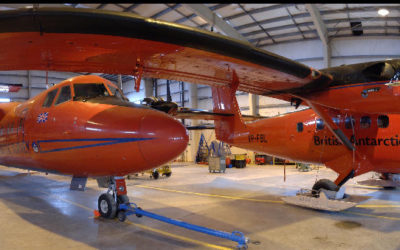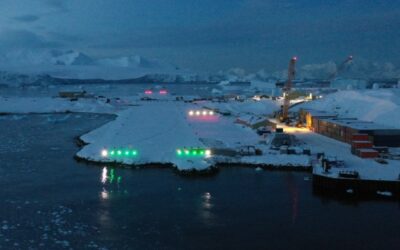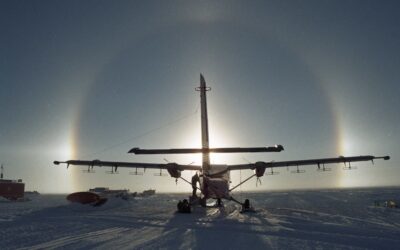Take off marks launch of Ticket to Antarctica
6 October, 2025
The fleet of British Antarctic Survey aircraft have taken off on their annual ‘ferry flights’ from Canada, in preparation for a new season of science in Antarctica. The BAS fleet …
Is to operate and manage an integrated fleet of aircraft for research, survey and polar logistics.
We aim to execute a challenging programme of airborne science and logistics and to provide a worldwide capability that gives the environmental science community access to a range of aircraft platforms and instrumentation. The fleet comprises the five specially adapted aircraft (De Havilland Canada Dash 7 and four Twin Otters).
At the beginning of each season pilots and engineers ferry the aircraft south from their base in the northern hemisphere. Flights in the Antarctic take place during the Antarctic summer, usually between October and March, as winter darkness and very cold temperatures prevent flying at other times.
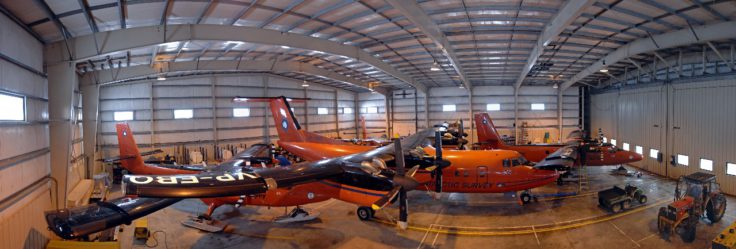
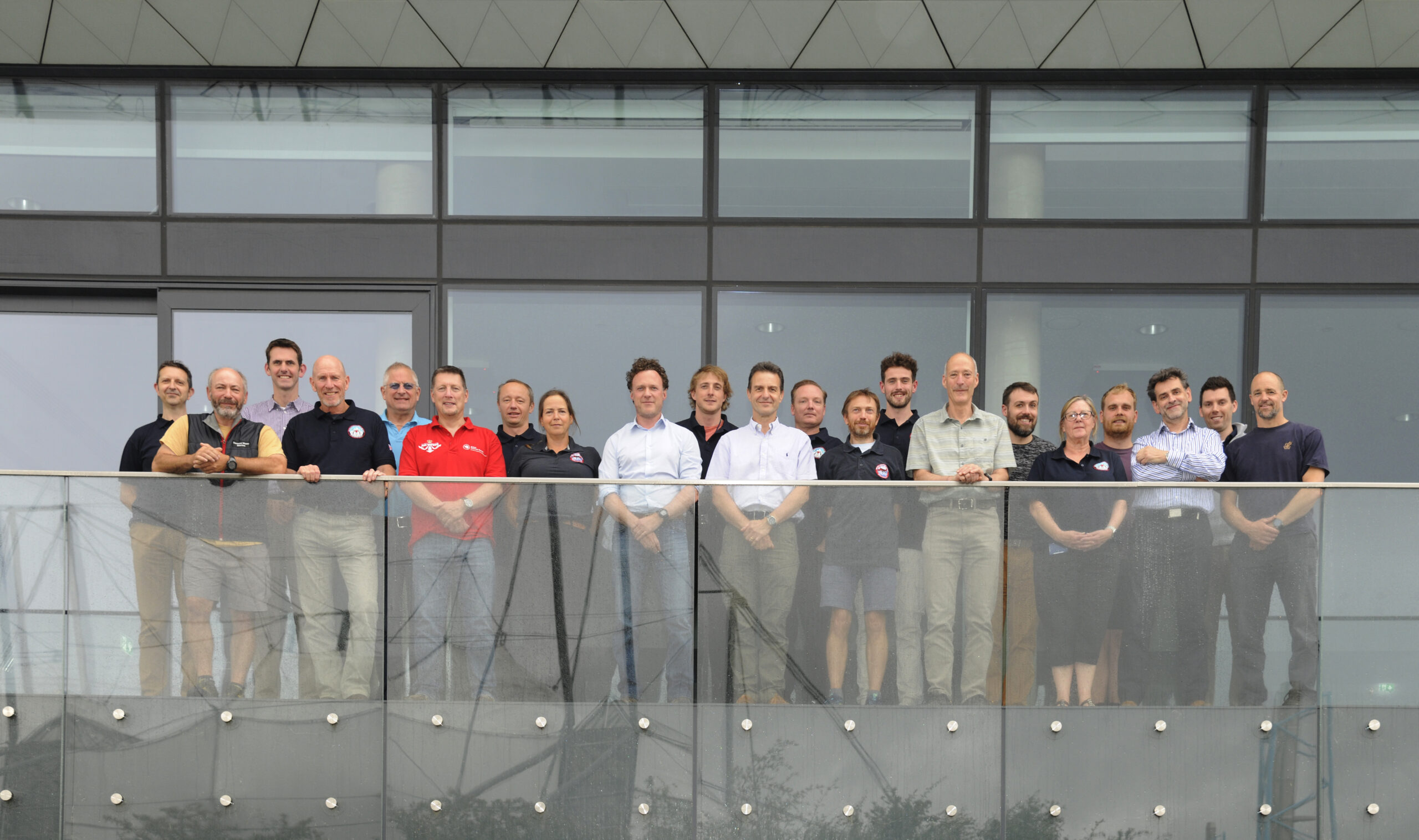
6 October, 2025
The fleet of British Antarctic Survey aircraft have taken off on their annual ‘ferry flights’ from Canada, in preparation for a new season of science in Antarctica. The BAS fleet …
3 January, 2025
Rod Arnold, Head of the Air Unit at the British Antarctic Survey (BAS), has been awarded an MBE in the New Year Honours list for services to Polar Science and …
25 October, 2024
British Antarctic Survey has won the Gold Award at the National Building and Construction Awards 2024 for ‘The Project of the Year (£10 million to £25 million)’. Oliver Darke, Director …
3 February, 2024
A team have arrived at Rothera Research Station, ready to start testing the new Windracers ULTRA autonomous drone in Antarctica. If successful, the new drone platform could represent a major …
3 February, 2023
A team of scientists are currently conducting a major experiment over the Southern Ocean that will help to improve climate modelling. The Southern Ocean Clouds project team are performing several …
11 August, 2022
Scientists are flying research aircraft through the heart of Arctic storms this summer to better understand how weather systems are affecting polar sea ice. Arctic cyclones are the main type …
30 September, 2021
Despite the global pandemic, the strong strategic relationship between the Falkland Islands Government (FIG) and British Antarctic Survey (BAS) has gone from strength to strength. Following the success of the …
23 April, 2019
Scientists embark on a three-week flying campaign today (23 April) to study methane emissions from gas fields in the southern North Sea. Using specialised scientific equipment, on board one of …
18 December, 2018
British Antarctic Survey is seeking to purchase a small passenger aircraft to work alongside its de Havilland Canada DHC-7 Series 110 (Dash 7). The aircraft will transport science and support teams and cargo between Rothera Research Station on the Antarctic Peninsula and Punta Arenas, Chile.
11 August, 2017
The British Antarctic Survey Air Unit have been awarded the Johnston Memorial Trophy for 2017 by The Honourable Company of Air Pilots. This is a considerable acknowledgement of the regard held …
23 November, 2015
New season tackles ambitious science and logistical challenges The British Antarctic Survey (BAS) 2015/16 field season is underway with dozens of scientists and support staff – together with planes and tonnes …
8 December, 2009
British Antarctic Survey achieves registration for the International Standard for Business Aircraft Operations British Antarctic Survey (BAS) has achieved registration for the International Standard for Business Aircraft Operations (IS-BAO). Following …
17 April, 2025 by Jamie Oliver
Antarctica, January 2025. Three expert teams are making their way across the stark frozen landscape, by sea, land and air – and they are planning to meet. Jamie Oliver shares …
7 March, 2025 by Matthew Hughes
As Rothera Research Station continues its modernisation programme, Matt Hughes, Tower Operations Supervisor, shares his thoughts on the transition to our new Operations Tower, marking a significant milestone in Antarctic …
12 March, 2019 by James France
Dr James France has just completed a week-long flying campaign using one of the BAS Twin Otters fitted with scientific instrumentation. Find out more about his experience.
2 December, 2015 by Ashly Fusiarski
As we finally approached our input site I could see our future home in the distance, a little black dot on a frozen white ocean, slowly growing in size as …
1 December, 2024 by Alexandra Weiss, Daniel Beeden, Thomas Lachlan-Cope
The THINICE field campaign, based from Svalbard in August 2022, provided unique observations of summertime Arctic cyclones, their coupling with cloud cover, and interactions with tropopause polar vortices and sea…1 January, 2000 by Eric Wolff, Victoria Auld
Frost flowers collected from the surface of new sea ice near the Brunt Ice Shelf, Antarctica, show depletion in sulphate and sodium relative to other sea water ions. This is…Read more on Frost flowers as a source of fractionated sea salt aerosol in the polar regions
Stephen Ward, Head of Air Unit (and Accountable Manager)
Mark Thomas, Head of Airworthiness and Aircraft Engineering
Oliver Smith, Chief Pilot
Information for pilots and engineers on visiting aircraft
